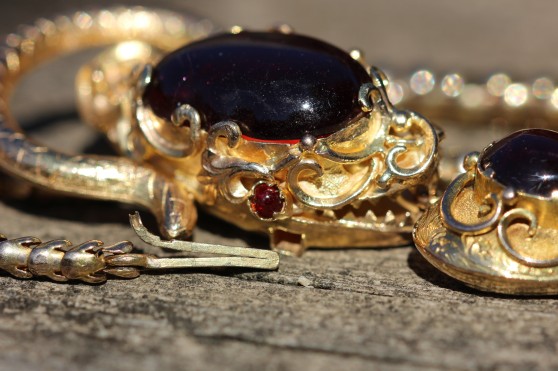In the Victorian period, the push-in box clasp remained in use, with the box part becoming fully enclosed. Some boxes became smaller and had a slot on the top of the box clasp, while the tongue was topped with a small latch on the back of the top of the tongue. When the tongue is placed inside the clasp, the latch slides into the slot and is caught there, until pressure is put onto the latch and the tongue can be removed. These have been described as a slide lock clasp.

The barrel and tongue clasp also continued to be used, although the barrel began to slim down into a simple tube.

In the 1840s, short snake necklaces were popular, usually with the tongue sliding into a slot set in the side of the snake head at the front of the necklace but some had the tongue inserted into the snake’s mouth.

The hook became popular again in the second half of the 19th century due to the archeological revival.
Slide tube clasps were used for multi-strand necklaces with coral or pearls. One part of the claps is a hollow tube, the other is a solid thin tube. Both parts have rings for the strands to be tied onto and a round knob on one end. The other side of the hollow tube has a long slit in it. The solid tube slides into the hollow tube with the slot on one side of it providing room for the rings.

Long chains without fasteners or clasps were still being worn and, at the end of the Victorian period, were to turn into sautoirs, long necklaces that crossed over at the end, often with a tassel on each end or that ended with a single tassel or pendant.
Next post, I will talk about some of the different types of necklaces worn in the Victorian era.

